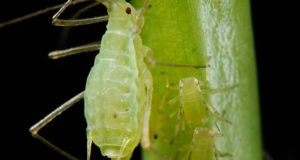|
Listen To The Article
|
Your seed trays and hoes are tucked safely away in the shed and your garden lays fallow under six inches of snow. Although the most active season for gardening is over, you needn’t lay aside the gardening habit completely.
Winter is a time for planning and contemplation. Write a few notes about your gardening efforts of the previous season. While they’re still fresh in your mind, jot down details, such as last and first frost, plant varieties, and successes and failures. Make notes of things you’d like to change and look through seed catalogs for varieties to try next year.
 Along with your planning, take some to indulge in some garden reading. During the summer, your garden reading is probably limited to must-know information about current gardening challenges. In the winter, though, you can leisurely explore gardening topics. Delving into more comprehensive gardening books increases your gardening knowledge while offering inspiration. The pay-off comes the following spring when you apply your new-found skills to your real-life garden.
Along with your planning, take some to indulge in some garden reading. During the summer, your garden reading is probably limited to must-know information about current gardening challenges. In the winter, though, you can leisurely explore gardening topics. Delving into more comprehensive gardening books increases your gardening knowledge while offering inspiration. The pay-off comes the following spring when you apply your new-found skills to your real-life garden.
Below are just a few of the books I love for winter garden reading. I prefer gardening books that do more than just offer dry gardening facts. Gardening books should reflect the experiences, personality, and humor of their writer. Gardening is an authentic life experience—no dry manuals allowed. So, start a fire, brew some tea, and curl up with a gardening book. Like all good books, these gardening guides will become old friends.
The Garden Primer, by Barbara Damrosch. After twenty years, this book still tops my list as my all-time favorite gardening book. Barbara Damrosch is a landscape designer who owns and operates a successful organic farm with her husband, Eliot Coleman. Her book covers every gardening project, from growing vegetables to growing fruit trees. Damrosch has an engaging, down-to-earth writing style, and it’s obvious that she knows and loves the topic of gardening. There’s nothing fussy or pretentious about her approach to gardening, and she inspires the reader with confidence. The book, originally published in 1988, was revised and republished in 2008 to reflect an entirely organic philosophy.
The Four-Season Harvest: Organic Vegetables from Your Home Garden All Year Long, by Eliot Coleman. Like Damrosch, Coleman takes a practical approach to gardening, believing that if a gardening approach seems complicated, then it’s probably wrong. His book offers hundreds of ideas on growing vegetables year-round through the use of cold frames and hoop tunnels. His writing is warm and charming; his wry humor is sprinkled throughout. Like The Garden Primer, this book is not only instructive, but fun to read.
The Complete Guide to Saving Seed, by Robert Gough and Cheryl Moore-Gough. If you’re serious about vegetable gardening, you’ll want to learn to save seed. This book offers detailed information on everything you need to know for seed saving. From choosing open-pollinated seeds to harvesting and storing them, you’ll come away prepared to maintain your own seed bank—a vital skill in today’s precarious world.
Gardening When it Counts, from Mother Earth News. Forget modern gardening techniques such as intensive planting and raised beds. These techniques are aimed at the hobbyist gardener and require ample amounts of fertilizer and water. If you’re serious about growing more than just a few tomatoes and lettuce, you need old-fashioned methods and a larger gardening space. This book is geared towards the beginning gardener and offers all the advice you need to grow a “real” garden with techniques that minimize water waste and maximum your harvest.
Weeding Without Chemicals, by Bob Flowerdew, England’s most well-known organic gardening expert, offers not only a comprehensive volume of weed-fighting tips, but also a discussion of the various weed categories, because the techniques needed for fighting annual and perennial weeds vary. This volume includes seventy-one color illustrations.
Secrets to Great Soil: Storey’s Gardening Skills. Behind every great garden is rich, fertile soil. Few gardeners are naturally blessed with loam—the chocolate cake of garden soils—but you can build good soil with the tips garnered from this informative book. Whether your soil is clay or sand, acidic or alkaline, this book offers everything you need to create and maintain a healthy loam.
Seed Sowing and Saving, by Carole B. Turner. This is a must-have book for anyone committed to self-sufficient gardening. Turner is a master gardener offering expert advice on how to collect and store seeds from over 100 different plants, including vegetables, flowers, and perennials. Diagrams and illustrations illuminate explanations. This book also offers detailed information on starting seeds indoors or in a cold frame. Never again will you need to buy costly nursery transplants, which are often contaminated with pesticides.
Apple Grower, by Michael Phillips, offers inspiration for anyone longing for an apple orchard. Apple trees have a reputation for being difficult to grow. After all, apples are the most pesticide-riddled, commercial crop, so they must be plagued by diseases and pests, right? Apple trees do take a little more care than some crops, but Phillips explains how to grow them without pesticides using both new technology and age-old techniques. Phillips’ book is suitable for the home grower, as well as those interested in small orchard enterprises. Learn how to grow heirloom, heritage varieties at home.
The Beginner’s Guide to Edible Herbs, by Charles W. Smith, et al. In this book, you’ll discover the pleasure of growing edible herbs at home. This book offers comprehensive information on common herbs, such as basil, thyme, rosemary, lavender, garlic, and dill. The book includes photos, recipes and advice for pairing herbs with food.
Herbal Remedy Gardens, by Dorie Byers. Part of becoming more self-sufficient is relying less on others for your health. Herbs have been used for hundreds of years to treat many common ailments safely and naturally. This book offers instructions for growing more than twenty medicinal herbs, including garlic, echinacea, and chamomile. You’ll find recipes for making tinctures and teas, as well as thirty-five illustrated herb garden plans.
The Dirt Cheap Green Thumb, by Rhonda Massingham. In recent years, gardening has become a multi-billion dollar business, and consumers sometimes believe they have to spend a lot of money on fancy tools and equipment to grow a productive garden. This book offers over 400 common sense tips for gardening on a budget. You’ll learn tips on seed starting, water conservation, inexpensive, organic weed and pest control and more.
The Veggie Gardener’s Answer Book, by Barbara W. Ellis, is a comprehensive guide for beginner and experienced vegetable gardeners. This book has it all—tips on starting seeds and planting, preparing the soil, dealing with pests and problems, and harvesting. Wondering whether to stake or cage tomatoes? This book offers the pros and cons of both, along with hundreds of other helpful tips.
©2013 Off the Grid News
 Off The Grid News Better Ideas For Off The Grid Living
Off The Grid News Better Ideas For Off The Grid Living




